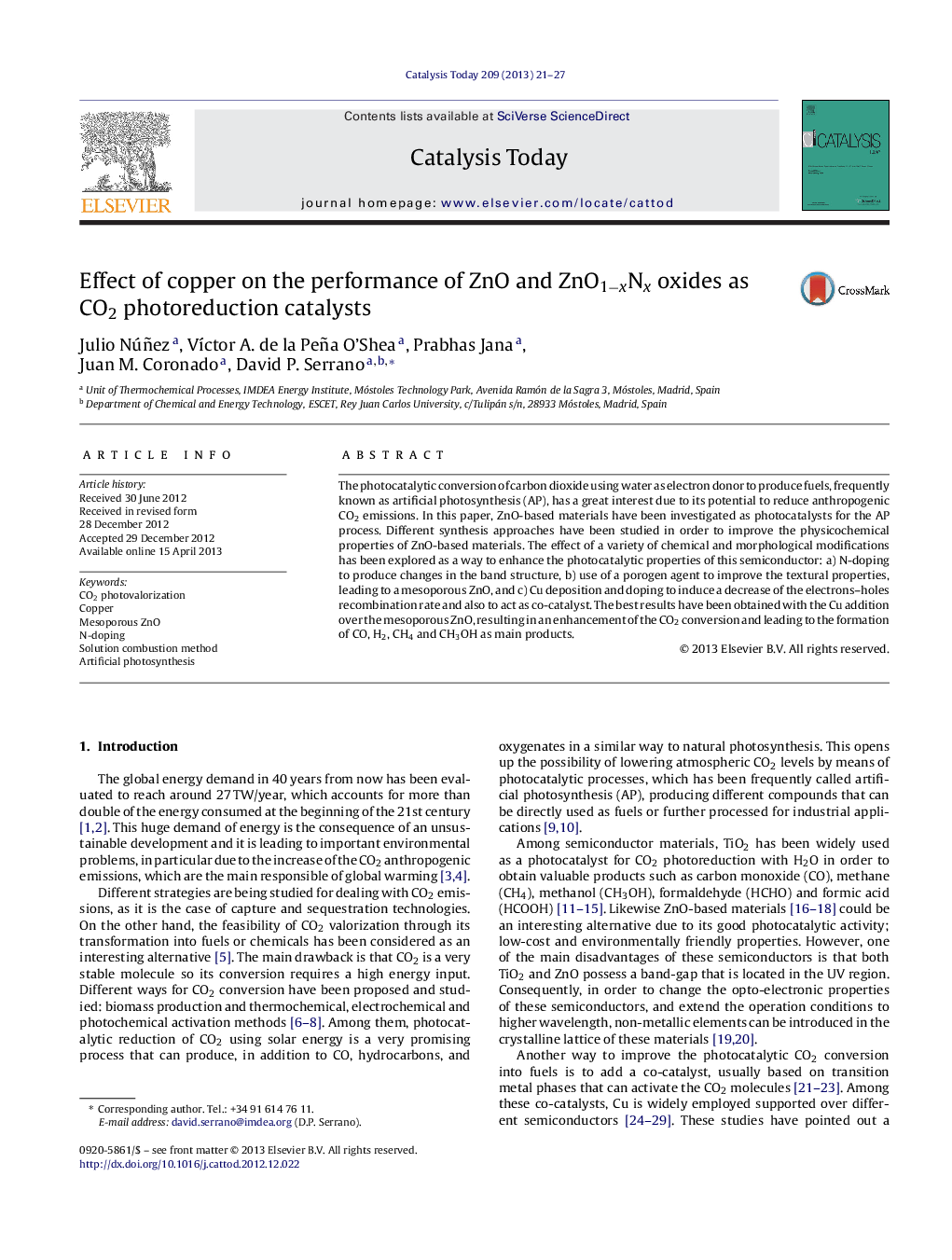| Article ID | Journal | Published Year | Pages | File Type |
|---|---|---|---|---|
| 55021 | Catalysis Today | 2013 | 7 Pages |
•Mesoporous ZnO photocatalysts modified with N and Cu were successfully prepared.•Catalysts synthetized were active for CO2 photoreduction with H2O as electron donor.•A synergetic effect between Cu and ZnO semiconductor was observed.•Cu addition favours activity and methanol formation.
The photocatalytic conversion of carbon dioxide using water as electron donor to produce fuels, frequently known as artificial photosynthesis (AP), has a great interest due to its potential to reduce anthropogenic CO2 emissions. In this paper, ZnO-based materials have been investigated as photocatalysts for the AP process. Different synthesis approaches have been studied in order to improve the physicochemical properties of ZnO-based materials. The effect of a variety of chemical and morphological modifications has been explored as a way to enhance the photocatalytic properties of this semiconductor: a) N-doping to produce changes in the band structure, b) use of a porogen agent to improve the textural properties, leading to a mesoporous ZnO, and c) Cu deposition and doping to induce a decrease of the electrons–holes recombination rate and also to act as co-catalyst. The best results have been obtained with the Cu addition over the mesoporous ZnO, resulting in an enhancement of the CO2 conversion and leading to the formation of CO, H2, CH4 and CH3OH as main products.
Graphical abstractThe effects of Cu addition into ZnO and ZnNxO1−x oxides have been studied for CO2 photoreduction. Mesoporous ZnO has been prepared using a surfactant as porogen and N doping has been performed via solution combustion method. A remarkable increase in the methane and methanol production takes place after the Cu incorporation into the mesoporous ZnO catalyst.Figure optionsDownload full-size imageDownload high-quality image (173 K)Download as PowerPoint slide
